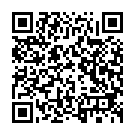|
|
|
| Module code: NE3104.APP |
|
2V+2P (4 hours per week) |
|
6 |
| Semester: 1 |
| Mandatory course: yes |
Language of instruction:
English |
Assessment:
Written exam (50%), project work (50%)
[updated 12.03.2020]
|
NE2105.APP (P213-0133, P213-0134) Neural Engineering, Master, ASPO 01.04.2020
, semester 1, mandatory course
NE3104.APP Neural Engineering, Master, SO 01.10.2025
, semester 1, mandatory course
|
60 class hours (= 45 clock hours) over a 15-week period.
The total student study time is 180 hours (equivalent to 6 ECTS credits).
There are therefore 135 hours available for class preparation and follow-up work and exam preparation.
|
Recommended prerequisites (modules):
None.
|
Recommended as prerequisite for:
|
Module coordinator:
Prof. Dr. Dr. Daniel Strauß |
Lecturer: Prof. Dr. Dr. Daniel Strauß
[updated 29.11.2024]
|
Learning outcomes:
After the lectures, the students will have a deep knowledge of human auditory perception and processing.
Particular emphasis is placed on the mapping of numerical auditory models onto neuronal structures, binaural hearing and selective auditory attention. The students become aware of the importance of research in this area for the development of new diagnostic and therapeutic procedures. This module is offered in close collaboration with the Department of Otorhinolaryngology of the Saarland University Hospital and with the ENT-center of the MediClin Bosenberg-Clinic.
Participation in actual research studies and/or lab projects to complement course topics is required. That way, students receive soft skill training related to safe patient handling.
[updated 18.07.2019]
|
Module content:
0. Overview of the hearing system:
0.1. Function of the outer, middle and inner ear, auditory pathway
1. Disorders and objective diagnosis of the auditory system, diseases, deafness
1.1. Objective diagnosis and disorders of the external, middle and inner ear
1.2. Objective diagnosis of the central hearing system
1.3. Therapeutic measures
1.4. Communication Techniques
2. Psychoacoustics of normal hearing
2.1. basic parameters of perception
2.2. binaural processing
3. Introduction to auditory scene analysis
3.1. History
3.2. Differences: auditory and visual system
4. Exogenous processing and automatic attention
4.1. Gestalt theory
4.2. Theory of primitive grouping
4.3. Streaming
5. Endogenous processing and non-automatic attention
5.1. Selective auditory processing
5.2. Conscious and knowledge-based selection principles
6. Neural models for selective attention
6.1. Neuronal filter structures
6.2. ART STREAM
6.3. Wrigley model
7. Neuronal correlates of exogenous and endogenous auditory processing
7.1. Auditory evoked potentials
7.2. Mismatch Negativity
7.3. fMRI paradigms
7.4. Central processing disorders
8. Perception of language and music
8.1. Common fate cues
8.2. Sequential language organization
8.3. Melody and timbre
9. Neurodiagnostics and therapy in audiology
9.1. Neurofeedback systems
9.2. Speech coding algorithms for cochlear implants
9.3. Brainstem implants
[updated 18.07.2019]
|
Teaching methods/Media:
Blackboard, digital projector, software
[updated 12.03.2020]
|
Recommended or required reading:
Bregman, Albert S.: Auditory Scene Analysis, MIT Press, 2001
Clark, Graeme M.: Cochlear Implants, Springer, 2003
Hall III, J.W.: Handbook of Auditory Evoked Responses, Allyn & Bacon, 1992
Levine, Daniel S.: Introduction to Neural and Cognitive Monitoring, Lawrence Erlbaum Associates, 2000
Marr, D.: Vision, Henry Holt & Company, 1982
Martin, Frederick N.;Clark John Greer: Introduction to Audiology, Pearson, (akt. Aufl.)
Rosner, Jorge: Peeling the Onion: Gestalt Theory and Methodology, Gestalt-Institute of Toronto, 1990
[updated 18.07.2019]
|


